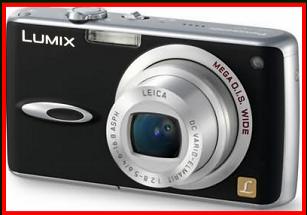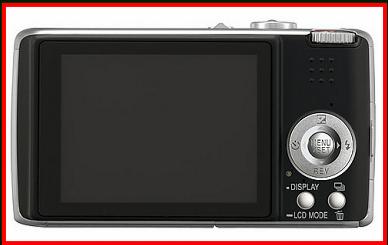Ok now let me get back to the camera. The FX01 is a 6 megapixel camera and the noise performance here is slightly below average but for Panasonic this is a big step forward. In the past Panasonic's well thought out designs have been like a distance runner in a sack race because of high noise levels at anything but the lowest ISO setting. The FX01 is a much better performer, at ISO80 and 100 images are clean and almost noise free. From ISO200 to 400 the camera still produces plenty of nice pictures as long as proper exposure can be attained.
What makes the FX01 a great pocketable camera? Of course the previously mentioned image stabilization is one of the biggest but along with this is a very nice little lens that provides true wide angle and has a zoom rate of 3.8Xwhich is almost 1X more range than most cameras of this type. This equals 28-102mm in 35mm terms where most comparable cameras have 35-105mm lenses. To me this is the first zoom lens on any pocketable digicam that when combined with the image stabilization is truly as useful as it should be. Even on indoor and low light shots, with stabilization on, many shots turn out usable. With most previous cameras, I have had, you could just about forget using the zoom in any lower light situation, even with flash.
Wide angle has been a real joy to have and is the main reason that I have picked this camera as my current carry along. For me I find that most of my pictures with my pocket camera are scenery shots or group shots where the extra wide angle provides very nice perspective.
The FX01 is very sleek and fits nicely in the hand or shirt pocket. It sports a very nice finish and is especially nice in black. The black is almost like a rubber covering not a paint and has the most wonderful and solid feel in the hand. The camera turns on very quickly and feels responsive and shot ready. It also has good flash cycle time without much of a pre-flash delay that is sometimes very annoying to me. This is particularly true of cameras from Olympus. To me a camera that is rated very well shot to shot but feels like you have to wait a second or two after you press the shutter button when using flash because the camera flashes a pre flash to determine proper exposure, is very frustrating. The flash on the FX01 is not particularly strong but I would say about average. When indoors and using flash plan on being about 5-7 feet away for good flash pictures.
Pictures that are taken with these little cameras tend to be spontaneous, quick, off the cuff and after all the comparisons are made what matters most really is how many of the shots that you were trying to capture were you able to keep and use. On this score the Panasonic DMC-FX01 does very well indeed. Less than 5% of what I took did I have to discard due to blur, noise or focusing issues.



